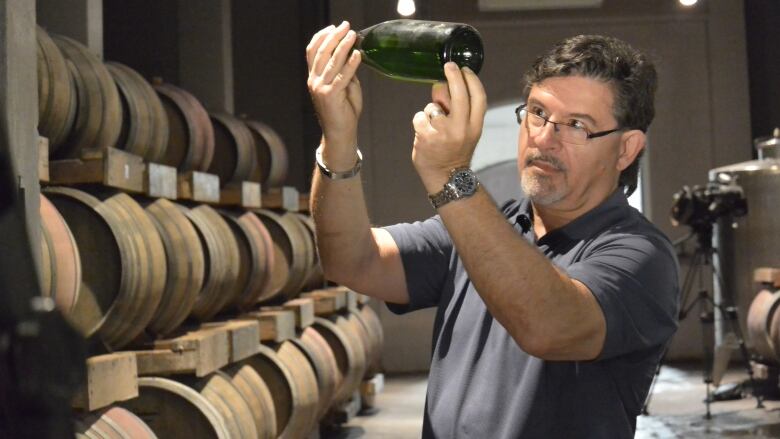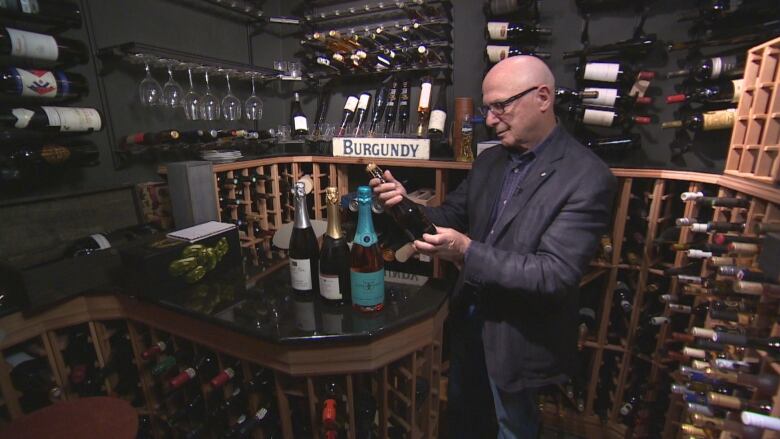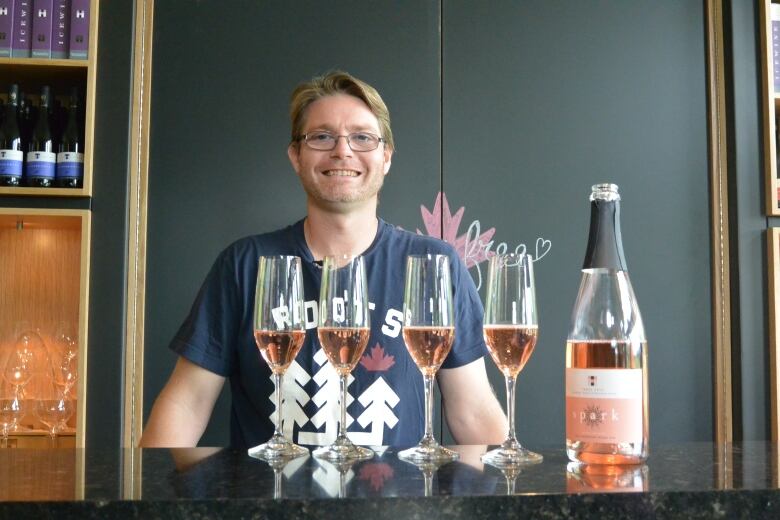Cheers! Canadian wineries uncork the market for bubbly
Perfect soil and weather give Canada's winemakers an edge in the effervescent global trend

Sparkling wine was once reserved for launching great vessels, wedding celebrations and the evenings of the idle rich.
But over the past half decade or so it's become a weekday beverage for imbibers around the world.
Canadian wine writer Tony Aspler says the gold standard for sparkling wine may still be bottles from the exclusive Champagne region in northernFrance, but they come with gold standard prices in the $50 to $70 range.
Aspler says it's the more plentiful and significantly cheaper sparkling wine from other parts of Europe that has driven the cork-popping explosion in popularity among consumers.
"They're used to cava from Spain and Prosecco from Italy. So we're drinking a lot more," said Aspler, who also conducts wine seminars. "One in 10 of the bottles of wine sold in the world is now sparkling."

"If you have limestone, which we do, that is perfect for growing PinotNoir and for Chardonnay. And so we have the temperature too, because for sparkling wines you don't need to get them as ripe as you do for table wines. Because what you need is acidity and we have that in spades."
In Ontario alone, theLiquor Control Board of Ontario says the number of wineries producing sparkling wines rose from 47 in 2013 to 68 this year.
In 2016-2017 the LCBO sold just under $100 million of sparkling wine, about 15 per cent of that from Ontario.
The Chateau des Charmes winery in Ontario's Niagara region is one of those. Paul Bosc,president of the winery his father co-founded in 1978, can trace seven generations of winemakers in his family all the way to France's Alsace region. Chateau des Charmes started making sparkling wine soon after it opened, but Bosc says the bottles have been really selling lately.
"Recent years have been the best time from a market perspective for sparkling wine," said Bosc. "We've not only expanded our production but we've introduced more styles of sparkling wine to address that interest."
Using the Methode Traditionelle
Given his ancestry, it seems fitting that Bosc produces sparkling wine inthe MethodeTraditionelle,perfected in France's Champagne region over four centuries ago.
It's a complicated and laborious process that typically starts with blending already fermented Chardonnay and PinotNoir wines in a thick bottle with a small amount of yeast and sugar. The bottles are topped with temporary crown caps.
Over several months the carbon dioxide created by the second fermentation brought on by the yeast is trapped in the wine, producing those bubbles so familiar to sparkling drinkers.

Centuries ago,winemakers would store the bottles on large wooded racks with angled holes. In a process called riddling, workers would twist and tip each bottle slightly every day until they were all upside down and the yeast fell toward the cap.
We can apply all the French techniques and know-how and produce very high quality sparklingwine.Paul Bosc, president, Chateau des Charmes
Today the bottles are held in large metal cages attached to a computer-controlled riddling machine. The process still takes months.
Once the yeast is close to the cap, workers flash-freeze the wine in the bottle's neck andpop the cap. The yeast-filled ice cylinder shoots out.
Once they replace the lost liquid with a solution of wine and sugars, then cork and cage the bottle, the sparkling wine is ready for the shelf.
Trade rules say only sparkling wine from Champagne can be called Champagne. Bosc sees that as an opportunity.
"The production in Champagneis finite, and as a result it can be quite dear. That's the business opportunity that exists for, say, Canadian sparkling wine producers like ourselves," he says .
Charging much less than the French
"We can apply all the French techniques and know-how and produce very high quality sparkling wine, at the same time not have to charge what the French are charging these days."
But Asplersays while Canada's sparkling wine producers are being rewarded with sales and awards, they are at a slight disadvantage to European wineries.

Ontario's Tawse winery,a more recent sparkling wine producer,has grown from making just one type of its wine called Spark to three, including a sparkling rose.
Winemaker Rene Van Ede says he relishes the complicated extra steps needed to make good sparkling wine.
"Sparkling wine is one of my favourite products to enjoy. It's one of the products I drink weekly, if not daily. It's a great way to start a meal, great to enjoy with a meal," says Van Ede.
"It's so many steps, so many little achievements, so many things to watch for that it's a great achievement to pop that bottle at the end of the day."
Luckily for Canadian wineries, a lot more people are raising a Champagne flute to that.












_(720p).jpg)


 OFFICIAL HD MUSIC VIDEO.jpg)
.jpg)



























































































